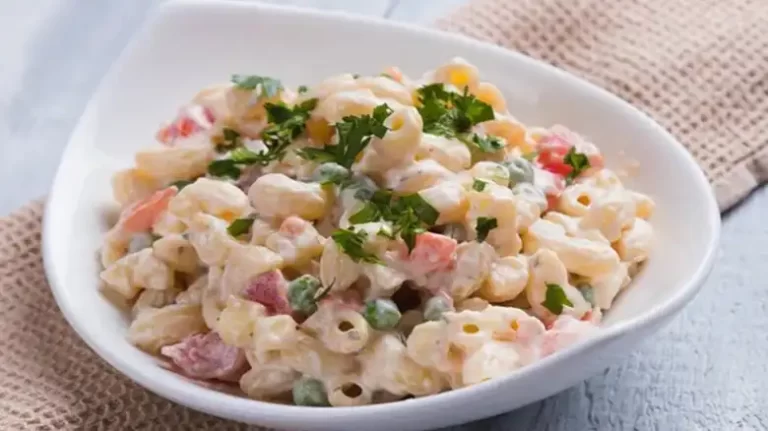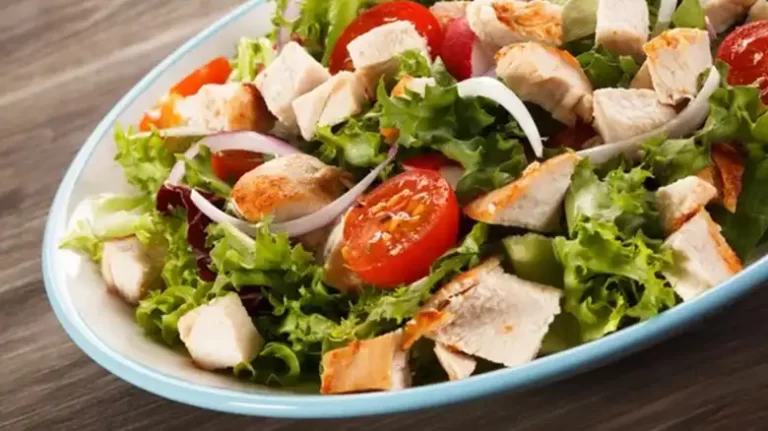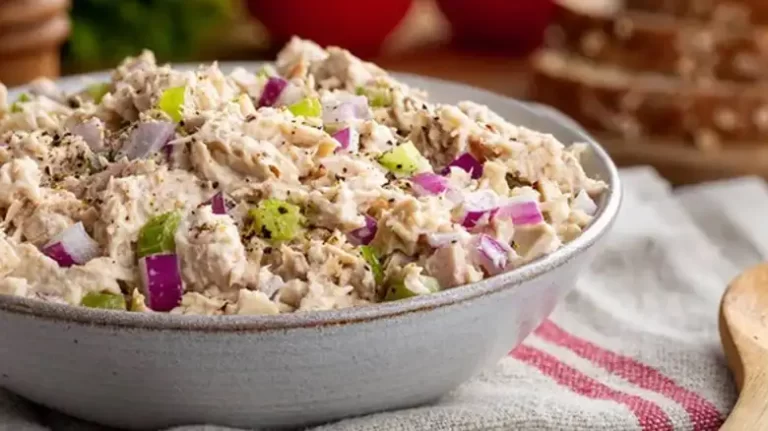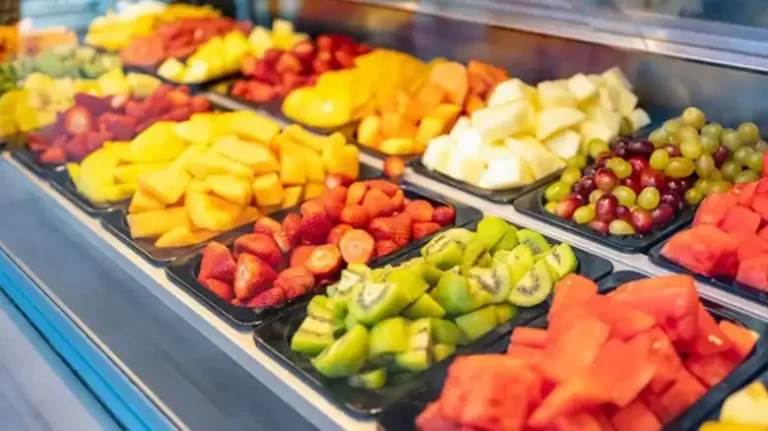Can You Freeze Tuna Salad
Tuna salad is a delightful dish loved for its savory blend of tuna, veggies, and creamy mayo. It’s a quick and convenient meal, but what if you want to prepare it in advance or have some leftovers? Can you freeze tuna salad without compromising its taste and texture? Yes you can freeze but let us find out the consequences.
In this article, we will explore the art of freezing tuna salad, uncovering the science behind it and providing you with practical guidance to ensure your frozen tuna salad remains just as delicious when you’re ready to enjoy it.
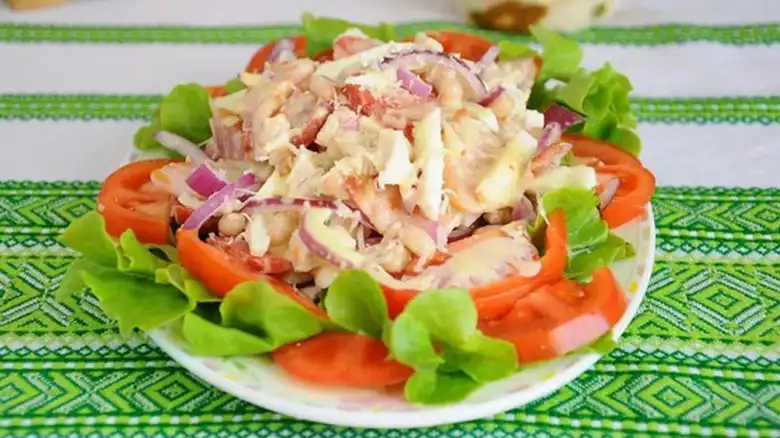
The Science Behind Freezing
Freezing food is a remarkable process that involves more than just tossing your meal into the freezer. Let’s dive into the science behind freezing and how it affects your tuna salad.
Freezing Basics
When you place your tuna salad in the freezer, the temperature drops significantly, often reaching below 0°F (-18°C). At these frigid temperatures, something fascinating happens to the water in your food – it turns into ice crystals.
These ice crystals can affect the texture of your tuna salad, but with proper handling, we can minimize the impact.
Ice Crystal Formation
As your tuna salad freezes, the water molecules inside it start forming ice crystals. These ice crystals can puncture the cell walls of the ingredients in your salad, such as veggies, causing them to become softer when thawed. That’s why sometimes, previously crisp vegetables might turn a bit mushy.
The Role of Moisture
Moisture is another critical factor in freezing. When you freeze tuna salad, moisture tends to migrate within the dish. This can lead to moisture imbalance, where some parts become drier while others become excessively wet.
The mayo in your tuna salad, for example, may separate, leading to a change in texture.
Minimizing the Impact
To minimize the effects of ice crystal formation and moisture imbalance, it’s important to choose the right containers and packaging. Using airtight, freezer-safe containers or bags can help seal in the moisture and protect your tuna salad from freezer burn.
The Thawing Process
The way you thaw your frozen tuna salad can also influence its final texture. Thawing it slowly in the refrigerator helps maintain its overall quality. Quick thawing methods like using a microwave or cold water are faster but might affect the texture more.
So, understanding the science behind freezing and thawing can help you enjoy a tuna salad that’s as close to the fresh version as possible.
Preparing Tuna Salad for Freezing
Tuna salad is a versatile and delicious dish that many people enjoy. However, there are times when you may have extra tuna salad that you want to preserve for future use.
Freezing can be a great option, but there are specific steps to take to ensure your tuna salad remains as tasty and safe to eat after freezing. In this section, we will guide you through the process of preparing your tuna salad for freezing, covering ingredient selection, mixing, portion control, and more.
Selecting the Right Ingredients
To prepare your tuna salad for freezing, start by selecting the freshest and highest-quality ingredients. Here’s what you need to consider:
Fresh Tuna: Begin with fresh tuna. Canned tuna or freshly cooked tuna are both excellent choices. Ensure the tuna is well-cooked and properly flaked.
Veggies: Choose your favorite vegetables for the salad. Common choices include celery, onions, and pickles. Opt for vegetables at their peak freshness.
Mayonnaise: Use mayonnaise or a suitable substitute to add creaminess and flavor to your salad. Ensure it’s well-mixed to avoid separation.
Seasonings: Seasonings like salt, pepper, and spices can enhance the flavor. Be mindful not to over-season, as flavors may intensify during freezing.
Mixing and Seasoning
The key to a successful frozen tuna salad is ensuring that it’s well-mixed and seasoned to perfection:
Texture: Mix the ingredients thoroughly to achieve a balanced and cohesive texture. Ensure that the tuna, veggies, and mayo are evenly distributed.
Flavor: Season your tuna salad with care. Start with a conservative amount of salt and pepper and adjust to taste. Remember that flavors can intensify during freezing.
Portion Control
Dividing your tuna salad into suitable portions is essential for efficient freezing and thawing:
Individual Portions: Consider portioning your tuna salad into individual servings. This allows for easy retrieval and reduces the need to thaw the entire batch.
Airtight Containers: Place each portion in an airtight container. Leave some space at the top to accommodate any expansion that may occur during freezing.
Labeling: Label each container with the date of preparation. Proper labeling helps you keep track of freshness and avoids confusion.
Avoid Overcrowding: Do not overcrowd the container; maintain a comfortable space between portions to prevent them from sticking together.
Freezing Tuna Salad
Now that you’ve prepared your tuna salad for freezing, here’s how you can go about the freezing process:
1. Choose Suitable Containers
Select containers that are designed for freezer use. Alternatively, you can use heavy-duty, airtight plastic bags or consider investing in a vacuum sealer for maximum protection. The goal is to keep the air out and the freshness in.
2. Fill Containers Carefully
Transfer your prepared tuna salad into the chosen containers, leaving a bit of space at the top to allow for any potential expansion during freezing. Ensure the container is tightly sealed to prevent freezer burn.
3. Label and Date
Organization is key when freezing multiple items. Label your containers with the date of preparation to track how long they’ve been in the freezer. This simple step can save you from the guesswork later on.
Safety and Health Concerns
When it comes to freezing tuna salad, it’s important to pay close attention to safety and health concerns. Ensuring that your frozen tuna salad is not only delicious but also safe to eat is paramount. Here, we’ll address key considerations to help you enjoy your frozen tuna salad without any worries.
Food Safety
Food safety is a top priority when it comes to freezing any dish, and tuna salad is no exception. Follow these steps to ensure your frozen tuna salad remains safe for consumption:
Cook Thoroughly: Make sure that all the components of your tuna salad, especially the tuna, are thoroughly cooked before mixing them. This reduces the risk of bacterial contamination.
Prompt Freezing: Once your tuna salad is prepared, don’t let it sit at room temperature for too long. Promptly transfer it to the freezer to prevent bacteria from multiplying.
Proper Storage: Use airtight containers or freezer bags to store your tuna salad. This prevents air from getting in, which can lead to freezer burn and affect the taste and texture.
Nutritional Quality
While freezing is a great way to preserve food, it can have some impact on the nutritional quality of your tuna salad:
Vitamins and Minerals: Freezing can cause a slight loss of some vitamins and minerals, but this is generally minimal. To mitigate this, choose fresh and high-quality ingredients when making your tuna salad.
Texture Changes: When you freeze and then thaw your tuna salad, the mayonnaise may undergo some textural changes. It might become slightly watery or separated. To address this, give the salad a good stir after it thaws to restore its creamy consistency.
Consumption Timing: To maximize the nutritional value of your frozen tuna salad, it’s best to consume it within 2-3 months. The longer it sits in the freezer, the greater the likelihood of taste and texture alterations.
Usual Questions
1. Can I freeze tuna salad with mayonnaise?
Answer: Yes, you can freeze tuna salad with mayonnaise. However, mayonnaise may change in texture after freezing, becoming slightly watery.
To restore the creamy texture, give it a good stir after thawing. Consider using a little extra mayo when preparing your tuna salad to compensate for any potential texture changes.
2. How long can I keep frozen tuna salad?
Answer: You can keep frozen tuna salad for up to 2-3 months in the freezer. While it may remain safe to eat beyond this time, it’s best to consume it as soon as possible for the best taste and texture. Proper storage and labeling can help you keep track of the storage time.
3. Can I freeze tuna salad sandwiches?
Answer: While you can freeze the tuna salad itself, it’s not recommended to freeze tuna salad sandwiches. The bread tends to become soggy when thawed, and the overall quality of the sandwich may be compromised.
It’s best to freeze the tuna salad separately and assemble fresh sandwiches when you’re ready to enjoy them.
4. Can I add ingredients like hard-boiled eggs to my tuna salad before freezing?
Answer: Yes, you can include ingredients like hard-boiled eggs in your tuna salad before freezing. However, be aware that the texture of the eggs may change slightly during freezing, making them slightly firmer.
If you enjoy this texture, there’s no issue. Just ensure that your tuna salad is well mixed before freezing to distribute the ingredients evenly.
5. Is it safe to eat thawed tuna salad after it has been left out at room temperature?
Answer: No, it’s not safe to eat thawed tuna salad that has been left out at room temperature for an extended period. Bacteria can multiply rapidly at room temperature, increasing the risk of foodborne illness.
To maintain food safety, thaw your tuna salad in the refrigerator or using other safe thawing methods and consume it promptly.
Conclustion
In conclusion, freezing tuna salad can be a convenient way to enjoy this delectable dish on your own schedule. By following the steps outlined in this article, you can ensure that your frozen tuna salad remains a delightful and satisfying meal.
With the right ingredients, preparation, and containers, you’ll have a delicious tuna salad waiting for you whenever you need it. So, go ahead and freeze that extra tuna salad – it’s a taste of preparedness that’s worth savoring.
